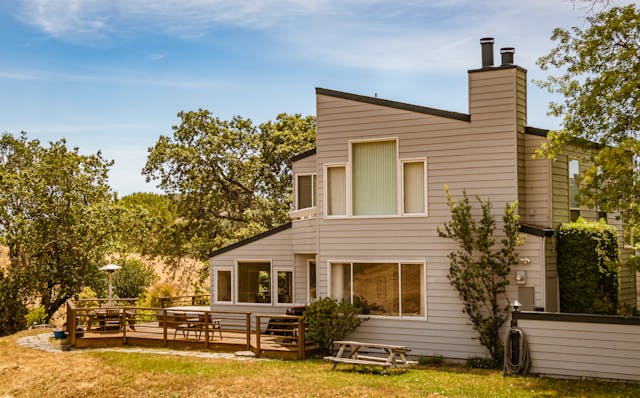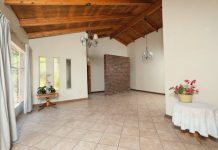Living in a desert climate like Scottsdale, AZ, comes with its own set of challenges. Summers are long, hot, and dry, with temperatures that can soar well over 100 degrees. Winter days might still feel warm in the sun, but nights can cool down quickly, sometimes enough to make you reach for the heater. It’s a climate that keeps homeowners on their toes when it comes to comfort.
Keeping your home comfortable in this environment isn’t just about switching on the air conditioner in summer and the heater in winter. It’s about understanding the climate, using your systems efficiently, and making a few smart adjustments to your home. With the right approach, you can create a steady, comfortable environment inside, no matter what’s happening outside.
1) Start with Reliable Climate Control
The heart of comfort in a desert home is your heating and cooling system. It needs to work hard during summer’s hottest days and still be ready for cooler evenings in the winter. That’s why keeping it in top condition should be a priority.
For homeowners in Scottsdale, having a dependable service provider makes all the difference. Many rely on One Hour Air Conditioning & Heating® of Scottsdale for everything from routine maintenance to emergency repairs. They offer quick, professional service that helps ensure your system is always ready when you need it. Whether it’s a mid-summer AC issue or a winter heating check, having experts you can call means less downtime and more comfort.
A well-tuned HVAC unit can keep your home at the right temperature while using less energy. That’s good for your comfort and your utility bills.
2) Use Ceiling Fans to Support Airflow
Ceiling fans are one of the simplest tools you can use to make your home feel more comfortable. They don’t change the temperature, but they help move air around, which can make a room feel cooler or warmer depending on the season.
In the summer, set your fans to rotate counterclockwise. This pushes cool air downward, creating a refreshing breeze. You might even be able to set your thermostat a few degrees higher without feeling any warmer. In winter, reverse the direction to clockwise at a low speed. This will pull cool air up and push warm air down from the ceiling, which is especially helpful in rooms with high ceilings.
Adding ceiling fans to bedrooms, living rooms, and other frequently used spaces is an easy way to support your HVAC system and improve comfort without adding much to your energy bill.
3) Seal and Insulate Your Home
Even in hot climates, insulation is important. It keeps cool air inside during summer and helps retain warmth in winter. If your home is poorly insulated, your HVAC system has to work harder, which means higher energy bills and more wear on the equipment.
Check your home for gaps or leaks where air could escape. Windows and doors are common problem areas—use weatherstripping or caulk to seal them. Look at your attic as well, since heat can enter or escape through the roof more easily if it’s not insulated properly.
Good insulation not only helps with temperature control but also reduces noise from outside, creating a more peaceful home environment.
4) Control Sunlight and Heat Gain
In the desert, sunlight can heat up your home quickly, especially during the afternoon. Using blinds, shades, or curtains to block direct sunlight during peak hours can make a big difference in keeping indoor temperatures stable.
Thermal curtains can add an extra layer of insulation, keeping heat out in summer and helping retain warmth in winter. If you prefer natural light, consider installing window films that block UV rays and reduce heat gain without making rooms feel dark.
Even small adjustments, like closing curtains on west-facing windows in the afternoon, can reduce the workload on your air conditioner and help keep your home comfortable.
5) Manage Indoor Humidity Levels
Desert air is dry year-round, but indoor heating in the winter can make it even drier. Low humidity can lead to dry skin, irritated sinuses, and more static in the air. It can also cause wood furniture and floors to crack over time.
A portable humidifier in bedrooms or a whole-home humidifier connected to your HVAC system can help maintain balanced moisture levels. Aim for 30% to 50% humidity. This range is comfortable for most people and can help protect your home’s interior.
In the summer, even though outdoor humidity is low, your cooling system naturally removes some moisture from the air. That means you usually won’t need extra humidity, but it’s still worth keeping an eye on levels.
6) Use Smart Thermostats for Better Control
Smart thermostats can help you manage comfort while using energy wisely. They allow you to set schedules so your home is only heated or cooled when needed. You can even control settings remotely from your phone, which is handy if your plans change.
For example, in summer, you can set the thermostat to let the temperature rise when you’re at work and start cooling down just before you return. In winter, you can lower the heat during the day and warm things up in the evening.
Some models also learn your habits and adjust automatically over time, making it even easier to keep your home at the perfect temperature without constant adjustments.
Keeping your home comfortable in a desert climate is all about preparation and consistency. Start with a reliable HVAC system, and make sure it’s well-maintained. Use ceiling fans to keep air moving and help your system work more efficiently. Seal and insulate your home to prevent air leaks. Block excess sunlight to reduce heat gain, and keep up with seasonal maintenance to avoid breakdowns.
Don’t forget about humidity control, especially in the driest months, and take advantage of smart thermostat technology to balance comfort with energy savings. With these steps, you can enjoy a home that feels good year-round, no matter how hot the summer gets or how cool the winter nights become.




